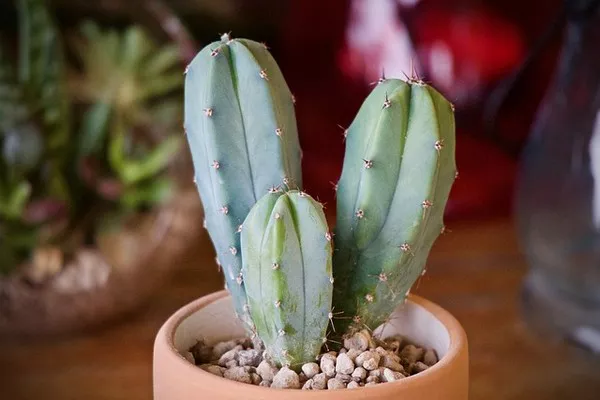Succulents have gained immense popularity as indoor and outdoor plants due to their unique appearance, low maintenance requirements, and adaptability to various environments. One crucial aspect of succulent care is replanting, which ensures the health and longevity of these charming plants. Whether you’re a seasoned gardener or a beginner, understanding the right techniques for replanting succulents is essential to maintaining their vibrant beauty. In this article, we’ll delve into the step-by-step process of succulent replanting, offering valuable tips and insights along the way.
Why Replant Succulents?
Replanting succulents serves several vital purposes, including refreshing the soil, preventing root-bound growth, and addressing any pest or disease issues. Over time, succulents may outgrow their current containers or deplete the nutrients in the soil, hindering their growth and appearance. Replanting presents an opportunity to rejuvenate your succulents and provide them with optimal conditions for thriving.
Selecting the Right Time
Timing plays a crucial role in the success of succulent replanting. The ideal time to replant succulents is during their active growing season, which typically occurs in spring and early summer. This allows the plants to establish their roots in the new soil before entering dormancy in the cooler months. Avoid replanting during the dormant period, as the plants are less likely to recover quickly.
Essential Materials
Before you start the replanting process, gather the necessary materials:
Succulent plants: The plants you intend to replant.
Well-draining potting mix: Choose a mix specifically formulated for succulents or cacti, or create your own by combining potting soil, sand, and perlite.
Container: Select a new container that is slightly larger than the current one and has drainage holes to prevent waterlogging.
Trowel or gardening gloves: These will help you handle the plants and soil with care.
Pumice or perlite: These amendments can further enhance soil drainage and aeration.
Watering can: For watering the newly replanted succulents.
Step-by-Step Replanting Process
Prepare the New Container: Fill the new container with well-draining potting mix, leaving enough space at the top for the succulents.
Gently Remove the Succulents: Carefully remove the succulents from their current container by gently loosening the soil and teasing out the roots. If the plants are tightly root-bound, you can tap the container’s sides to help loosen them.
Inspect and Trim Roots: Examine the roots for any signs of rot, damage, or pests. Trim away any unhealthy or excessively long roots using clean, sharp scissors or pruning shears. Healthy roots are firm and white or light tan in color.
Planting Depth: Place the succulents in the new container at the same depth they were in the old container. Avoid planting them too deep, as this can lead to stem rot.
Backfill with Soil: Gently pack the potting mix around the succulents, ensuring that they are stable and upright. You can add a layer of pumice or perlite on top to enhance drainage.
Give Them Space: Make sure to leave some space between each succulent to allow for growth and prevent overcrowding.
Watering: Water the newly replanted succulents thoroughly but gently. Allow excess water to drain from the bottom of the container. Be cautious not to overwater, as succulents are susceptible to root rot.
Avoid Sun Exposure: Place the replanted succulents in a shaded area for a few days to help them acclimate to their new environment. Gradually introduce them to more sunlight to prevent sunburn.
Caring for Newly Replanted Succulents: For the first few weeks after replanting, monitor the succulents closely. Water only when the top inch of the soil is dry, as overwatering can lead to root issues.
Resume Regular Care: Once the succulents show signs of new growth and have acclimated to their new container, you can resume their regular care routine, including light and water requirements.
Additional Tips for Successful Replanting
Use the Right Soil: Succulents thrive in well-draining soil. Avoid using regular potting soil, as it retains too much moisture. Opt for a mix formulated for succulents or create your own with sand and perlite.
Don’t Rush the Process: Take your time when removing the succulents from their old container and when replanting them. Rushing can lead to root damage or shock.
Consider Propagation: While replanting, you might notice that some succulents have grown offsets (small plantlets). You can gently separate these offsets from the parent plant and replant them to grow new succulents.
Avoid Disturbing the Roots: When handling the succulents, try to minimize disturbance to their roots. Healthy root systems are vital for successful replanting.
Choose the Right Container Size: Select a container that provides enough room for the succulents to grow but isn’t excessively large. A container that is too big can hold onto too much moisture, leading to root problems.
Conclusion
Replanting succulents is a rewarding process that contributes to the overall health and beauty of these unique plants. By following the steps outlined in this guide and paying attention to important tips, you can ensure a successful replanting experience. Remember that each succulent has its own specific care requirements, so observe your plants closely and make adjustments as needed. With proper care and attention, your replanted succulents will continue to thrive and delight for years to come.


